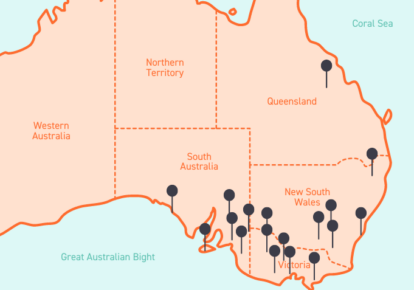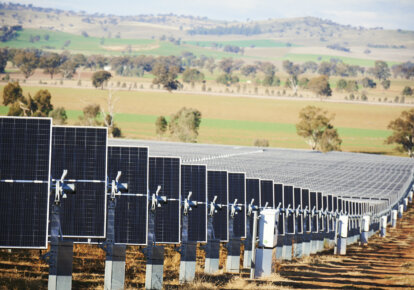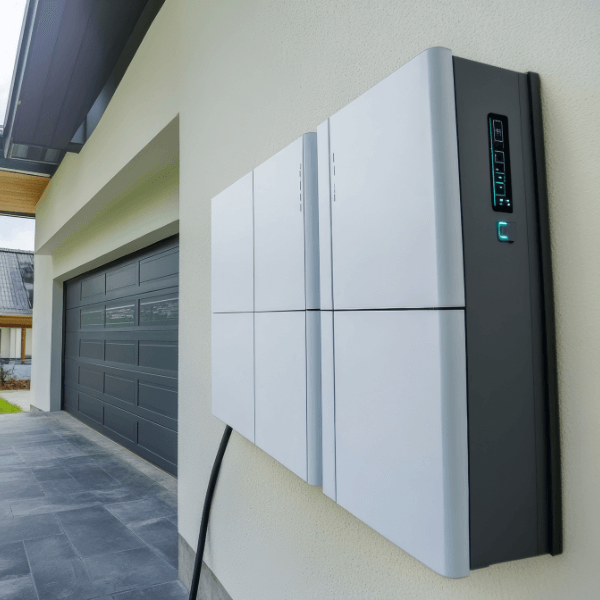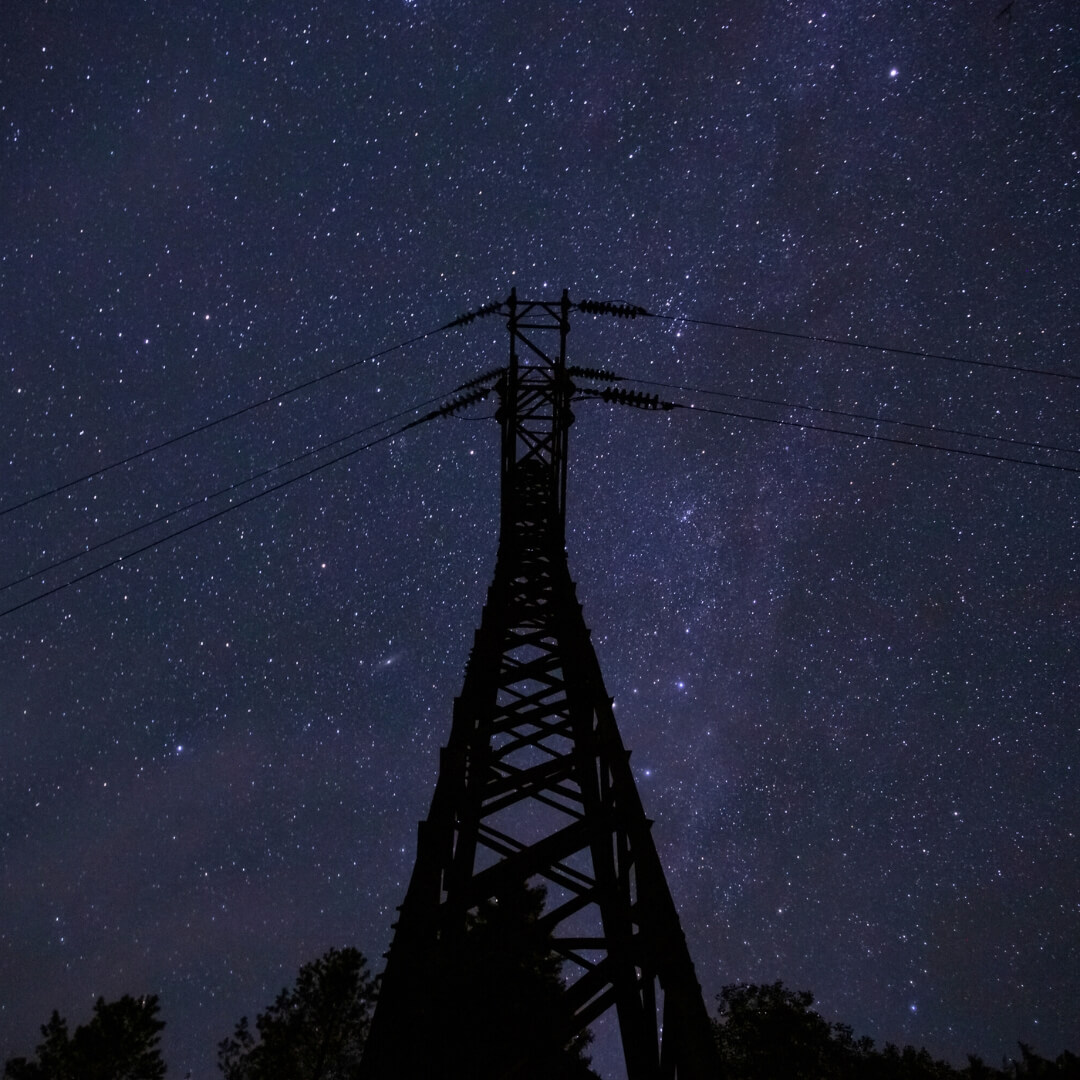Significant price volatility occurred in New South Wales and Queensland throughout November. Prices exceeded $10,000/MWh on seven days in New South Wales and five days in Queensland, totaling four hours and 2.5 hours respectively. These high prices were driven by transmission outages, coal unit outages, and high demand driven by hot weather – with the Bureau of Meteorology (BoM) declaring spring 2024 as the hottest on record for Australia.
The impact of these tighter supply/demand conditions during November led to average prices in New South Wales increasing three times the October average, and 2.5 times higher for Queensland. The southern states had much lower prices, with average prices in Victoria and South Australia for the month approximately one third of the prices in New South Wales and Queensland.
According to the Australian Energy Market Operator (AEMO), the ‘summer’ risk period runs through to the end of March. This period has a higher likelihood of heat waves which drives high peak demands from cooling loads and increase the risk of fossil generation failure. Electricity consumers who can reduce their electricity consumption during peak demand and price periods, help to keep the electricity system secure. With an electricity plan such as Flow Power’s, customers who can reduce usage in peak periods can also realise significant savings in their electricity costs.
Electricity price insights
44.9% of all electricity generated in November came from renewable sources across the network, the fourth highest monthly share on record. With reduced coal generation and high availability of wind and solar generation, New South Wales set a new monthly renewable generation record of 43% of total generation.
In November, up to four of the twelve coal generation units in New South Wales were offline due to planned and unplanned maintenance, compared to an expectation of only two units out at a time before the start of the month. This reduction in capacity exacerbated planned transmission outages in New South Wales and saw both New South Wales and Queensland reliant on expensive gas peaking generation during high demand periods. Transmission and generation outages are often planned for spring to avoid the winter and summer higher demand periods, and particularly to prepare generators for summer. The early arrival of hot weather and the resulting tight conditions highlight the increasing difficulty of scheduling outages to minimise system impacts.
Changes in forward contract prices for CY25
Forward prices for 12-month futures in all three mainland regions ended the month higher than they started.

- New South Wales prices are up 22% from a year ago, and 8% from October 2024
- Queensland prices are up 22% from a year ago, and 4% from October 2024
- South Australia prices are up 4% from a year ago, and 7% from October 2024
- Victoria prices are up 17% from a year ago, and 9% from October 2024
November 2024 NEM insights by state
New South Wales
- Average spot price of $220/MWh, with 64 hours of negative prices and 24 hours above $300/MWh
- $200/MWh difference in average underlying spot prices at the cheapest and most expensive times of day
- No daily intervals with an average negative price over the whole month
- A record 43% total renewable generation through the month
- Minimum demand of 4,802 MW
- Peak demand of 11,535 MW
Queensland
- Average spot price of $177/MWh, with 113 hours of negative prices and 29 hours above $300/MWh
- $250/MWh difference between the average underlying prices at the cheapest and most expensive times of day
- No daily intervals with an average negative price over the whole month
- 34% total renewable generation through the month
- Minimum demand of 4,167 MW
- Peak demand of 9,256 MW
South Australia
- Average spot price of $61/MWh, with 235 hours of negative prices and 2 hours above $300/MWh
- $250/MWh difference between the average underlying prices at the cheapest and most expensive times of the day
- Average prices were negative for almost all periods between 9:30 AM and 3:30 PM during the month
- 80% total renewable generation through the month
- Minimum demand of –55 MW, meaning SA rooftop solar was generating more than the region required and exporting the excess
- Peak demand of 2,366 MW
Tasmania
- Average spot price of $96/MWh, with 33 hours of negative prices and 4 hours above $300/MWh
- $80/MWh difference between lowest and highest time-based average underlying spot price
- No daily intervals with an average negative price over the whole month
- More than 99% total renewable generation through the month
- Minimum record of 878 MW
- Peak demand of 1,378 MW
Victoria
- Average spot price of $64/MWh, with 207 hours of negative prices and 1 hour above $300/MWh
- $220/MWh difference between lowest and highest time-based average underlying spot price
- Average prices were negative for all periods between 10:00 AM and 12:30 PM during the month
- 44% total renewable generation through the month
- Minimum demand of 1,775 MW
- Peak demand of 7,791 MW
November temperatures
November was the fifth-warmest on record for Australia, with Queensland sweltering through its highest November minimum temperatures. Combined with a warm September and October, it was the warmest spring on record.
The BOM continues to predict a higher-than-average likelihood of peak temperatures across Australia exceeding historic median levels through to the end of March. Unusually high overnight temperatures are expected for New South Wales and Queensland.
Looking ahead to December 2024
A burst of heat is coming through most of the east coast early in December, bringing high peak demands. While hot temperatures are forecast to continue for Queensland, the other states should get a reprieve through mid-December. Traditionally the Christmas/New Years holiday period brings significant demand reductions as workplaces shut down, but this impact could be offset if there is further hot weather driving air conditioner usage.
Australia’s aging coal generators are more likely to experience issues during hot weather which can require units to come offline for repairs. Planned generation availability for the coming summer is very high, with all but one Victorian coal generation unit and one large New South Wales gas generator expected back in service by mid-December. This means volatility through the summer is likely to be driven by any unplanned outages, and the severity of hot weather. Most major coal and gas generating unit outages are concluding by mid-December which will improve the available generation capacity.
Transmission outages in New South Wales are similarly due to conclude by mid-December which will increase the transmission capacity between Victoria, New South Wales, and Queensland and improve the system security for all three states.
With better generation and transmission availability going into summer, all eyes will be on the weather as the key driver of demand and prices across the National Electricity Market.
Any questions? Our energy specialists are here to help.
If you’re an existing Flow Power customer, don’t hesitate to reach out to your account manager.
If you’re not a Flow Power customer, feel free to contact our friendly team:
1300 08 06 08
Alternatively, you can submit your questions through our website contact form here.













